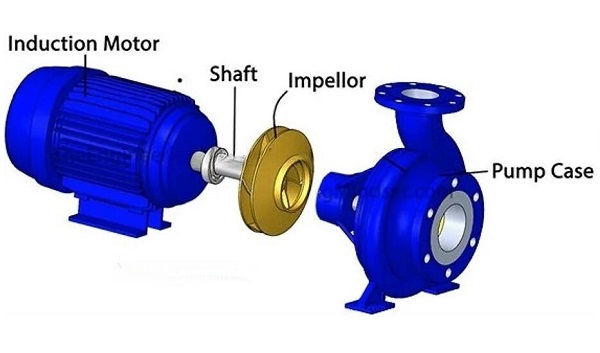
In daily life, water is pumped from underground to the ground, or in industrial production, the transportation of various liquids often relies on the magical device of pumps. Just like the role of the heart in supplying blood to the human body, pumps play a key role in promoting the flow of liquids in many systems.
1. Basic structure of pumps
There are many types of pump structures, but generally they include several basic parts.
The impeller is a very important part of the pump structure. The impeller is like a small fan that rotates rapidly. It generates centrifugal force on the liquid through high-speed rotation. This centrifugal force can throw the liquid from the center to the edge of the impeller, so that the liquid can gain energy and start to flow. The shape, size, number and angle of the impeller will affect the performance of the pump. For example, in some large irrigation pumps, the impeller is larger in size and has more blades, so that more water can be pushed at each rotation to meet the needs of large-scale irrigation.
The pump body is a component that holds liquid. Its shape and material are designed according to different usage requirements. If it is a pump used to transport corrosive liquids, the pump body may have to use special corrosion-resistant materials, such as stainless steel or plastic. The pump body is like a "small house" for liquid. It must ensure that the liquid inside can be smoothly pushed by the impeller, and it must ensure sealing to prevent liquid leakage.
There is also a shaft, which connects the impeller and the power source such as the motor. The shaft is like a "bond" for transmitting energy. The power generated by the motor is transmitted to the impeller through the shaft, allowing the impeller to rotate at high speed. If the shaft is not strong enough or the concentricity is not good, the rotation of the impeller will be affected, and the working efficiency of the pump will be greatly reduced. For example, in some high-speed pumps, the shaft must be made of high-strength alloy materials and must be precisely processed to ensure that it will not bend or break when rotating at high speed.
The sealing device is also an indispensable part of the pump structure. It is like a loyal "goalkeeper" to prevent liquid from leaking out of the pump, and also prevent outside air or impurities from entering the pump. If the seal is not good, there will be various problems in the operation of the pump. In the chemical industry, some liquids are toxic or flammable. If the sealing device fails, the leaked liquid may cause serious harm to the environment and personnel.
2. Characteristics of the pump
Different types of pumps have different characteristics.
In terms of flow, pumps have their own specific flow range. Flow is like the amount of water in a river. Some pumps can deliver a large amount of liquid per unit time, just like the abundant water in large rivers; while some pumps have a relatively small flow, like a stream in the mountains. For example, in the urban water supply system, the flow of the main water supply pump is very large, so that the water needs of many users in the entire city can be met; while in some laboratories, the flow of small injection pumps used for precise experiments is very small, and it is necessary to accurately control the amount of liquid delivered.
Head is also an important feature of the pump. The head is equivalent to the height to which the pump can lift the liquid. In the water supply system of high-rise buildings, a pump with a very high head is required to lift water from the pool on the ground to the homes of residents dozens of floors high. In some relatively flat farmland irrigation, the head of the required pump does not need to be so high.
The efficiency of the pump is also a key point. A high-efficiency pump can make more full use of energy when working, just like a person who knows how to live well, using every bit of energy on the blade. For example, some new energy-saving pumps use advanced impeller design and motor technology. Compared with traditional pumps, they can output more liquid at the same input power, greatly saving energy costs.
In addition, the reliability of the pump is also very important. Just like a reliable friend, it will always be there when you need it. In some important industrial production processes, such as refineries or power plants, if the pump suddenly fails and stops working, it may cause the entire production process to be interrupted, causing huge economic losses. Therefore, the pumps used in these places often have high reliability and can work stably for a long time.
The basic structure and characteristics of pumps are diverse, and they play their own unique roles in different fields. Understanding this knowledge of pumps is of great significance both for engineers to design better pumps and for ordinary users to choose suitable pumps.
Contact:SunmoyPump
Phone:0086-13867770817
E-mail:sunmoy@sunmoy.com
Add:Headquarters Economic Park,Yueqing,Zhejiang,China